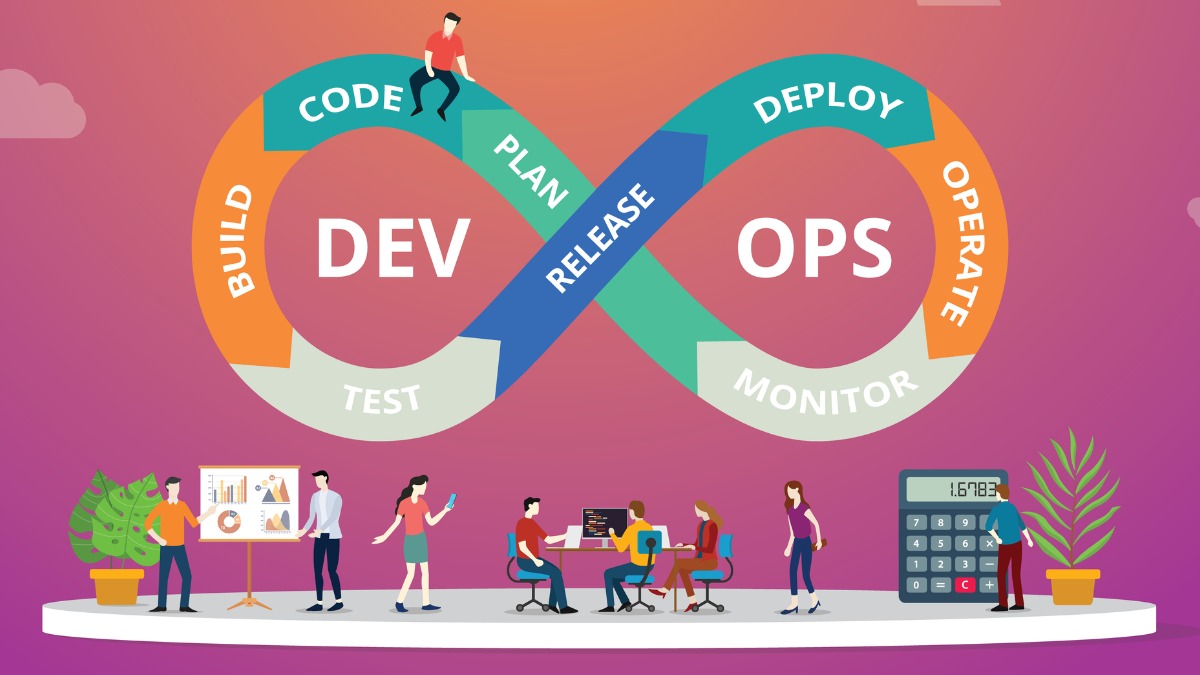
Here’s what you will learn:
Over the years, implementing DevOps infrastructure has become a norm for forward-thinking businesses. Not only does it enable them to deliver software or applications faster but it also lets them save up on team efforts. The objective of DevOps is to create an environment in the development and operations teams that can collaborate to can build, test, and deploy software quickly, reliably and frequently. With this mindset, it becomes possible for a business to achieve its objectives faster and deploy new features, bug fixes, and security patches to make flawless applications. Beyond just embracing this approach, it is important to embrace the latest trends for deriving the best benefits.
Table of Contents
Here are the best of DevOps trends 2020 that every business should align with.
Greater focus on automation
The future of DevOps is going to be all about automation. With automation in action, a faster delivery cycle will become a reality for businesses. Before understanding the concept of DevOps automation , you need to know about the fundamental pillars in the SQL DevOps cycle. These include:
- Collaborative development
- Continuous development
- Ongoing testing
- Continuous release & deployment
- Continuous monitoring
- Collaborative feedback & optimization
As a part of the emerging trend, assembly lines with DevOps and microservices will focus on bridging the gaps between the manual and automated tasks. As a result, the apps will get to the production lines and also will be available to clients quicker than ever before.
The transition from CI pipelines to DevOps assembly lines
As businesses want to automate their software development processes, awareness about the latest DevOps tools is becoming their prime motive. This year, you can expect a transition from CI pipelines to DevOps assembly lines, which is something that you must bear in mind during DevOps implementation. Further, there are some advantages that you can derive from the shift to assembly lines. These are:
- Powerful nested visibility
- Native integrations
- Excellent Continuous Delivery (CD) with interoperability
- Quick onboard and scale with “As-Code” philosophy
- Team-based Business Intelligence (BI) and Analytics
SQL will make a comeback
In 2020, enterprises will focus on standardizing around SQL for the entire data management stack. Developers and data scientists will rely on SQL for data management solutions of all types, whether it is online operational systems, offline batch analytics, or streaming platforms. The renewed interest in SQL is attributed to the fact that it is tough to write custom code for gluing together a data pipeline. At the same time, developers also struggle with learning different domain-specific query languages for diverse NoSQL databases. SQL, as a data retrieval language, resolves these problems.
Microservices architecture will be everywhere
Any provider you approach for DevOps services can tell you the significance of microservices in the modern business landscape. Microservices architecture enables businesses to make deployments and adding new features with great ease. The implementation of microservices into DevOps plans will be in vogue for businesses as it can also help businesses focus on the runtime and drive efficient delivery of new development sources. Further, there will be less hassle with creating dependency errors if something malfunctions unexpectedly.
Service meshes will be popular
Service mesh refers to a built-in app infrastructure layer that enables the execution of data sharing between services. Simply speaking, it is a stack that facilitates service-to-service communication and simplifies the collaboration between development and operation teams. Further, service meshes look after several common application tasks that the development teams traditionally had to address in their own setups and code. They may include load balancing, encryption, authentication, authorization, and proxying. With so much taken care of by service meshes, development teams are freed up to work on code improvements.
Automated monitoring and recovery will be a norm
It is to be noted that CI/CD is only the initial step in automating the operations of your application. As one of the key benefits of DevOps, a typical cycle also includes regular monitoring which quickly alerts the relevant party as soon as an error is detected. Furthermore, these systems can even rollback to a more stable version. Also, they can spin up a new instance, restore the database from a backup automatically, or provision other recovery options as well. Good DevOps can, in fact, dramatically cut down recovery time from small errors or even a major disaster.
Security will be a priority
The growing number of data breaches along with a greater emphasis on data privacy regulations like GDPR and PSD2 has made security a key trend for businesses. As new regulations will be implemented, developers will have to include strict security policies right within the application code. There will probably be more DevOps tools that automate compliance-related tasks for the information security teams, thus weaving in security measures into the every day CI workflows. DevSecOps, the emerging DevOps trend, adds security into the conventional application development life cycle from the very beginning. This reduces vulnerabilities while making the IT and business objectives more attainable.

What is DevOps?
DevOps is a collaboration between Development and Operations and unites Process, People and Working Product to enable continuous integration (CI) and continuous delivery (CD) of value to the end-users. Basically, it accelerates the process of delivering applications and software services.
How does DevOps work?
DevOps brings the Development and Operations teams together for obtaining products and services with maximum quality and efficiency. The emphasis on automating as much as possible using multiple tools.
What are the steps of DevOps lifecycle?
DevOps lifecycle is the process that the development team and DevOps engineers follow as a singular unit from the beginning to the final stage of product deployment. It includes the following phases:
- Continuous development (CD)
- Continuous integration (CI)
- Continuous testing
- Continuous monitoring
- Continuous feedback
- Continuous deployment
- Continuous operations
What is CI/CD in DevOps?
Essentially, continuous integration/continuous delivery (CI/CD) is regarded as the pillars of successful DevOps. Businesses that want to avail the best benefits of the CI/CD development model need to build an effective pipeline for automating their build, integration and testing processes.
What are the objectives of DevOps?
The primary objective of DevOps is to optimize value flow from idea to end-user. It is capable of increasing the frequency and quality of application deployments. Further, it can drive innovation and risk-taking for businesses by making it safer to experiment. A business that embraces this approach needs a cultural change to do it successfully and get measurable results with the initiative.
Conclusion
Now that you know how DevOps is likely to evolve in the New Year and beyond, it is time to rework on your strategy to align. Not doing so will definitely put your business behind while fine-tuning your approach will surely streamline your development processes. It will let you secure benefits such as better efficiency of your workforce and greater customer satisfaction. OrangeMantra is a name you can rely on for delivering the best-in-class DevOps services for taking your business to the next level. We can help you with powerful and trending solutions that open the opportunities for data-driven innovation. Share your requirements with us and we will get started.


